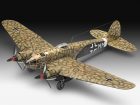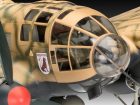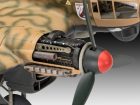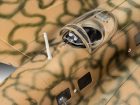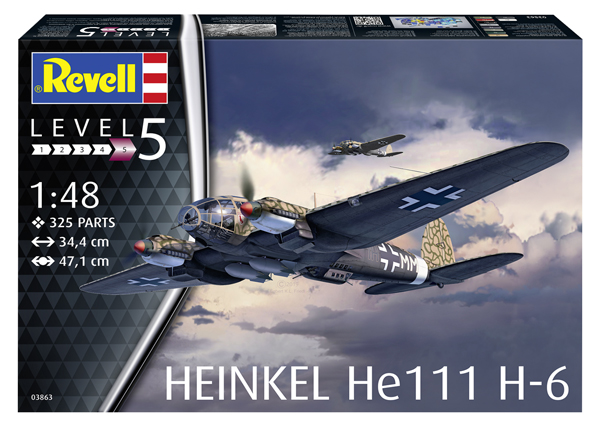
Kit Ref: 03863
In box browse with Geoff Coughlin (November 2019)
Our thanks to Revell for supplying our review sample. Revell model kits are available from all good toy and model retailers. For details visit Revell

Here’s my video review
Here’s my summary…
Geoff C.
SMN Quick summary Star rating out of 5
| FEATURE | STAR RATING |
|---|---|
| Quality of moulding | **** |
| Level of detail | **** |
| Accuracy | **** |
| Instructions | *** |
| Decals | **** |
| Subject choice | **** |
| Overall | **** |
Here are some photos of the manufacturer’s model…
This model certainly looks the part :)
Here’s a little bit more about the Heinkel He111
The Heinkel He 111 was a German aircraft designed by Siegfried and Walter Günter at Heinkel Flugzeugwerke in 1934. Through development it was described as a “wolf in sheep’s clothing”. Due to restrictions placed on Germany after the First World War prohibiting bombers, it masqueraded as a civil airliner, although from conception the design was intended to provide the nascent Luftwaffe with a fast medium bomber.
Perhaps the best-recognised German bomber due to the distinctive, extensively glazed “greenhouse” nose of later versions, the Heinkel He 111 was the most numerous Luftwaffe bomber during the early stages of World War II. The bomber fared well until the Battle of Britain, when its weak defensive armament was exposed. Nevertheless, it proved capable of sustaining heavy damage and remaining airborne. As the war progressed, the He 111 was used in a variety of roles on every front in the European theatre. It was used as a strategic bomber during the Battle of Britain, a torpedo bomber in the Atlantic and Arctic, and a medium bomber and a transport aircraft on the Western, Eastern, Mediterranean, Middle Eastern, and North African Front theatres.
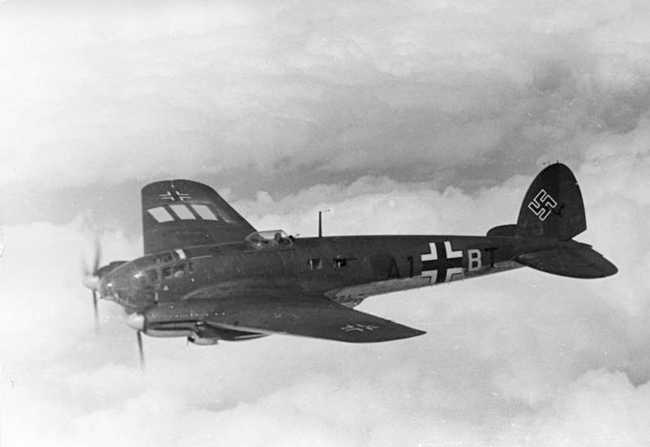
Production of the Heinkel continued after the war as the Spanish-built CASA 2.111. Spain received a batch of He 111H-16s in 1943 along with an agreement to licence-build Spanish versions. Its airframe was produced in Spain under licence by Construcciones Aeronáuticas SA. The design differed significantly in power plant only, eventually being equipped with Rolls-Royce Merlin engines. The Heinkel’s descendant continued in service until 1973.
H-6
The H-6 initiated some overall improvements in design. The Jumo 211 F-1 engine of 1,007 kW (1,350 hp) increased its speed while the defensive armament was upgraded at the factory with one 20 mm MG FF cannon in the nose and/or gondola positions (optional), two MG 15 in the ventral gondola, and one each of the fuselage side windows. Some H-6 variants carried tail-mounted MG 17 defensive armament. The performance of the H-6 was much improved. The climb rate was higher and the machine could reach a slightly higher ceiling of 8,500 m (27,200 ft). When heavy bomb loads were added, this ceiling was reduced to 6,500 m (20,800 ft). The weight of the H-6 increased to 14,000 kg (30,600 lb). Some H-6s received Jumo 211F-2s which improved a low-level speed of 226 mph (365 km/h). At an altitude of 6,000 m (19,200 ft) the maximum speed was 270 mph (435 km/h). If heavy external loads were added, the speed was reduced by 21.75 mph (35 km/h).
